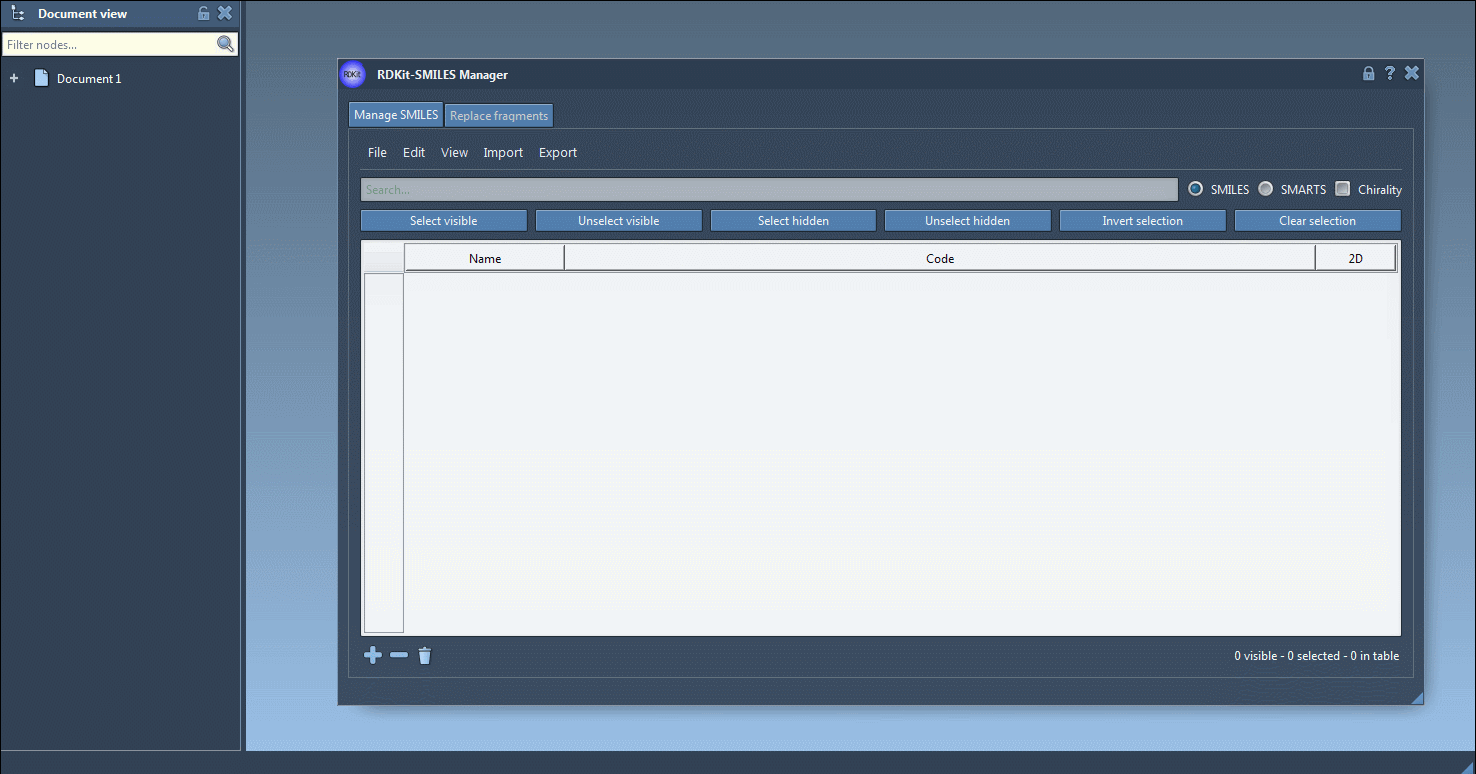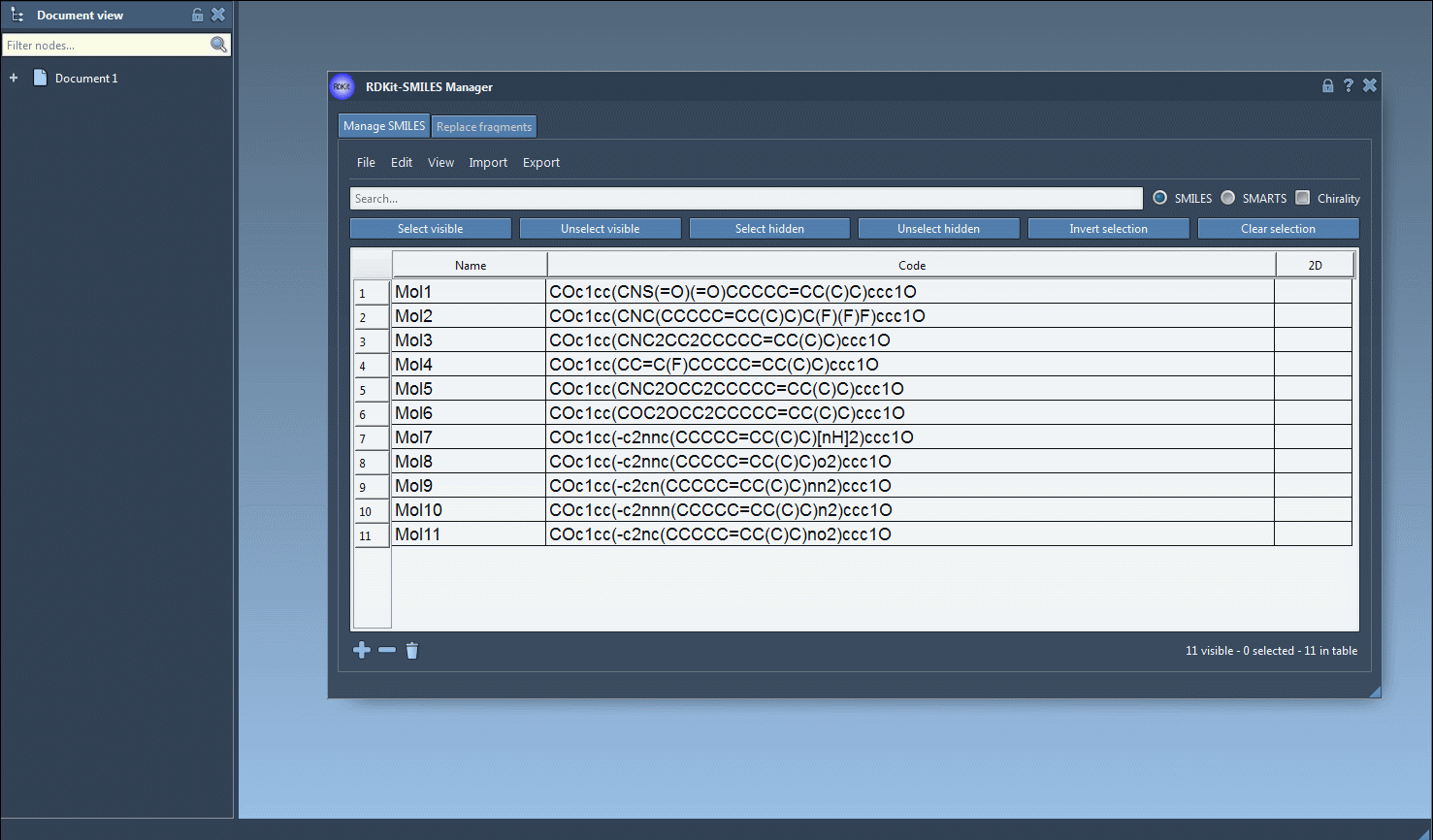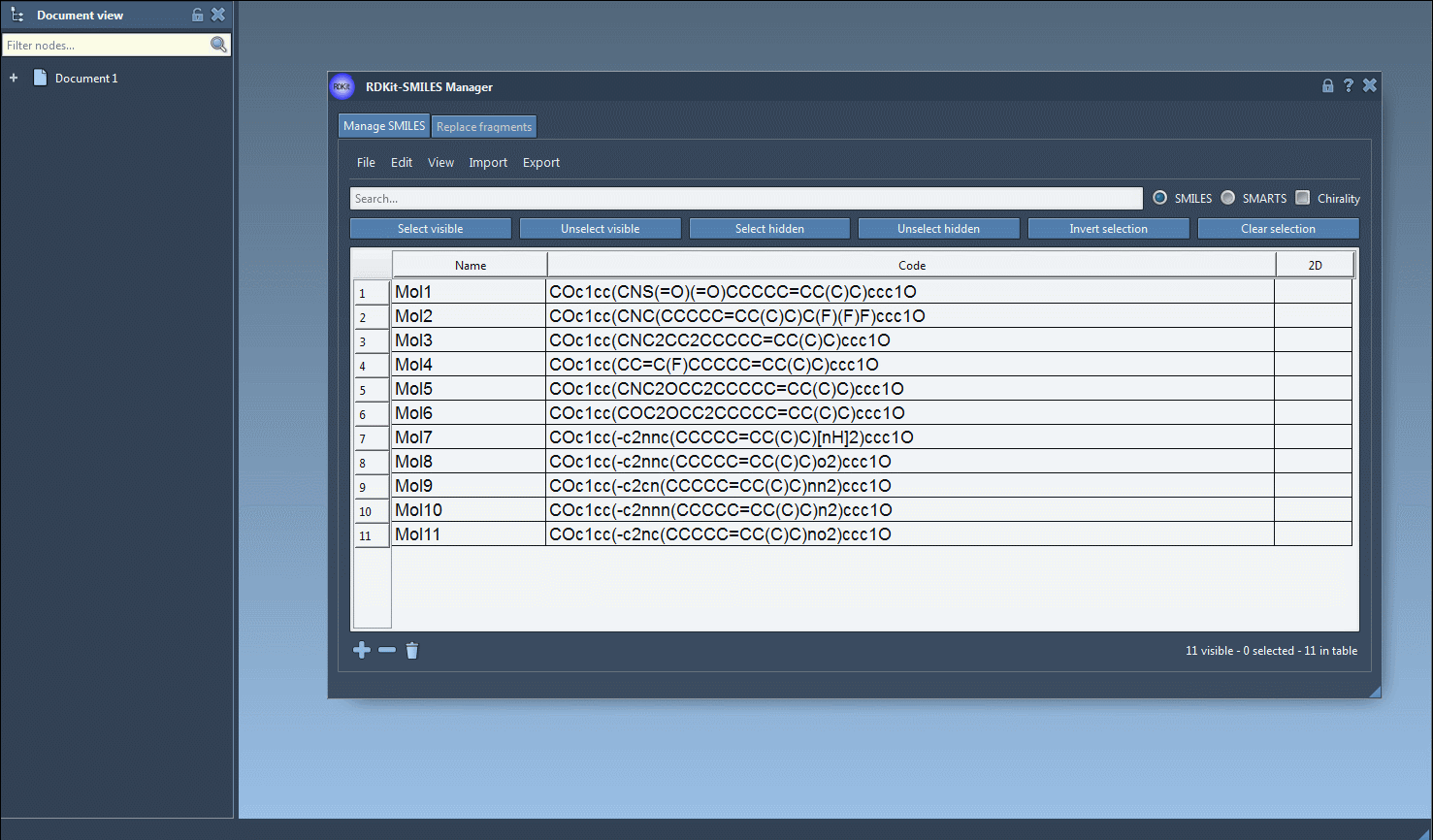Have you ever had a long list of SMILES strings and wished there were an easy, visual way to convert them into 3D structures? Whether you’re building a virtual screening library, exploring molecular properties, or just trying to visualize molecules quickly, converting SMILES codes to 3D structures is a recurring task in molecular modeling. SAMSON’s SMILES Manager provides a surprisingly user-friendly way to handle this.
Let’s take a look at how you can generate 3D molecular models directly from SMILES, all within a single interface.
Start with SMILES
The process starts by importing your SMILES codes. SAMSON supports both standard .smi files (with SMILES strings and names) and plain .txt files. You can either load files or just paste them in manually.

Get a Quick Overview with 2D Depictions
Once imported, each molecule is displayed with a 2D structure—generated on the fly using RDKit. This immediate visualization helps identify typos or invalid entries. Invalid SMILES codes are flagged with an error icon, so you don’t waste time debugging silent errors down the line.

Generate 3D Structures in One Click
The 3D generation step is simple. Select the molecules of interest and click on Selected SMILES string to Document in the Export menu. SAMSON will generate 3D structure(s) and place them into your active document. You’ll also retain their corresponding names, which keeps your workspace organized.

Want to Preview Before Exporting?
You can preview and even zoom individual molecules in high resolution before deciding to add them to your document. Open the larger 2D view window, hit the Generate 3D structure button, and evaluate the geometry visually.

Who Is This For?
If you’re quickly assembling a molecular document from flat data, this can save hours of manual conversion and checking. Researchers in early-stage drug design, cheminformatics, or anyone needing to visualize molecules based on SMILES input will find this especially useful.
Things to Keep in Mind
- If your molecules are large, remember you can zoom into the generated images to inspect specific regions.
- If you’re using this for publication or presentations, 2D depictions are exportable as PNG or SVG.
- For quick layout purposes, you can also generate grid images from selected 2D structures.
To learn more or explore additional features like substructure search or fragment replacement, head over to the original SMILES Manager tutorial page.
SAMSON and all SAMSON Extensions are free for non-commercial use. You can download SAMSON at https://www.samson-connect.net.





